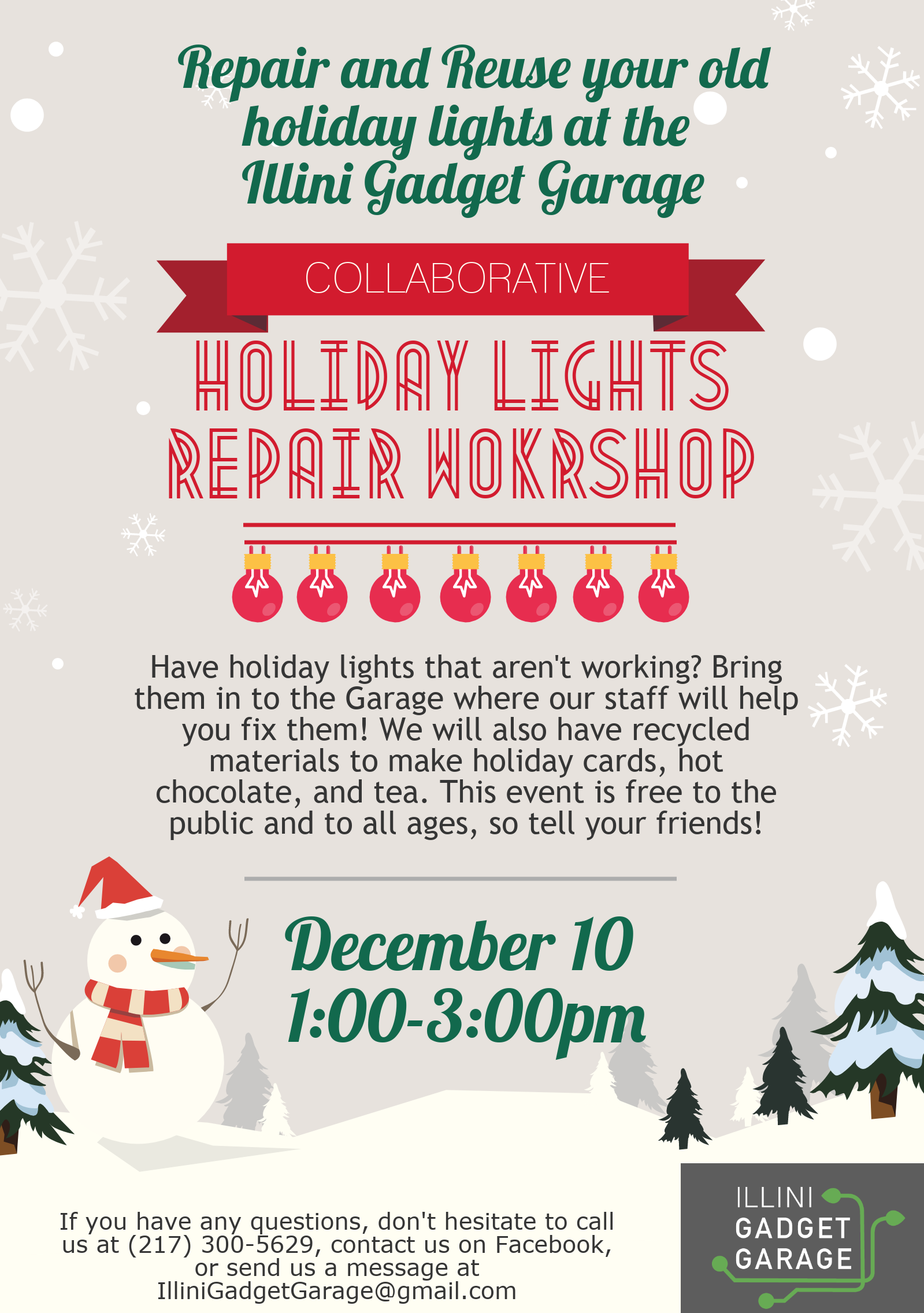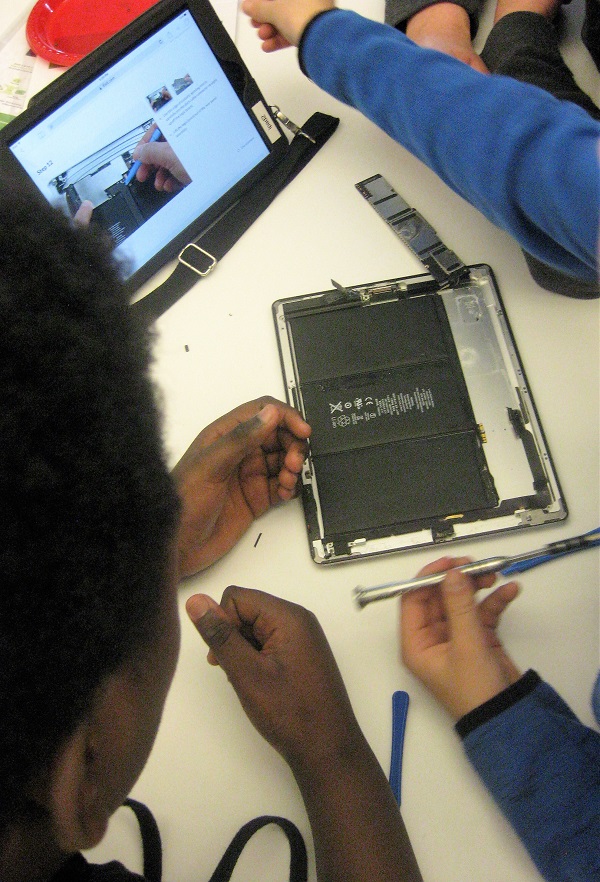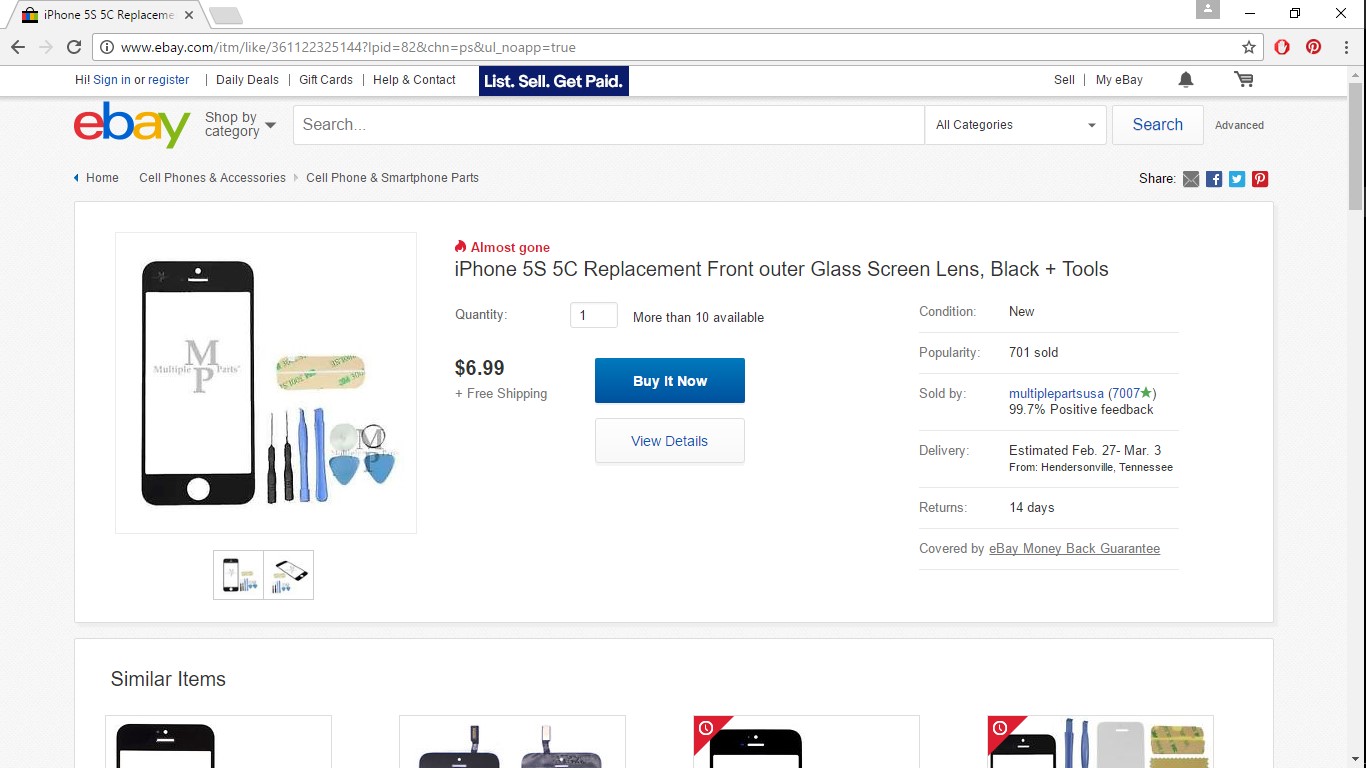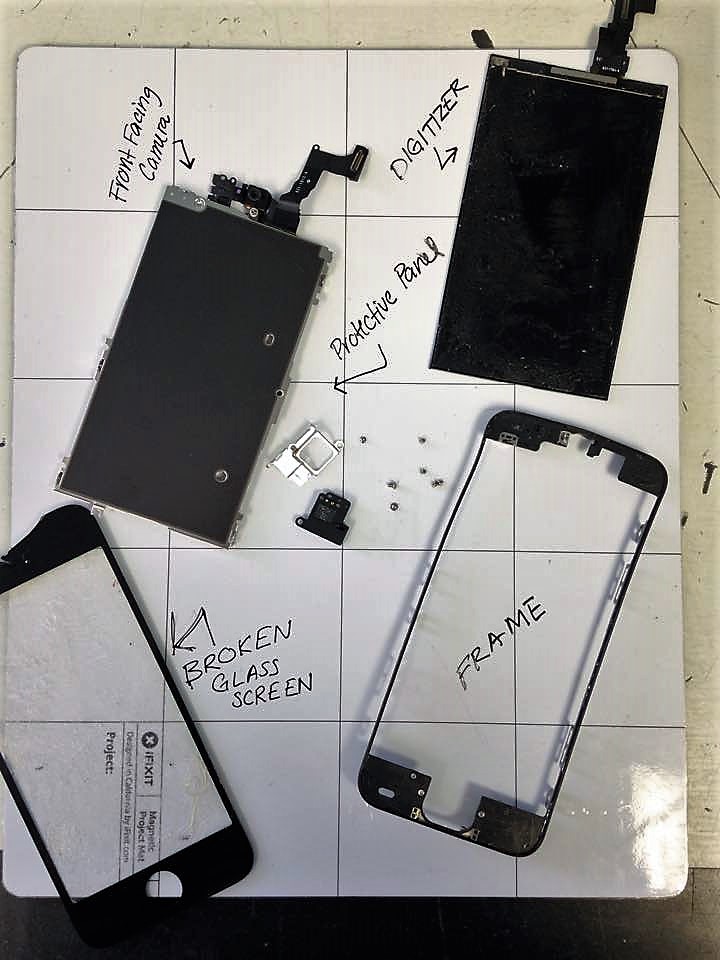Note: This post was written by Illini Gadget Garage staff member Madeleine Wolske.
Wishing you all Happy Holidays and a wonderful New Year! We will be closed for the remainder of 2017, follow us for updates on our schedule next year!
Note: This post was written by Illini Gadget Garage staff member Madeleine Wolske.
Wishing you all Happy Holidays and a wonderful New Year! We will be closed for the remainder of 2017, follow us for updates on our schedule next year!
Note: This post was written by Illini Gadget Garage staff member Madeleine Wolske.
Join the IGG staff this coming Sunday, December 10th, from 1:00-3:00pm for an afternoon of festive repair! Bring in your broken holiday lights and we will help you repair them. After your repair, enjoy some hot chocolate or tea and create a card out of recycled electronics. This event is free, but we will be accepting a suggested donation of $5 to help defray the costs of running the Illini Gadget Garage. For more information on how to donate, follow this link to our online form.
Happy Holidays!

Note: This post was written by Illini Gadget Garage staff member Madeleine Wolske.
Welcome to another school year! Update your calendars-we’ve adjusted our open hours! We will now be open:
Monday 11:00-3:00
Tuesday 6:00-9:00pm at the UIUC Undergraduate Library
Wednesday 11:00-3:00
Thursday 11:00-3:00
Looking forward to seeing you this Fall semester!
Note: This post was written by Illini Gadget Garage staff member Madeleine Wolske.
This past Tuesday, two staff members had the pleasure of going to the Champaign Public Library and setting up a fun Pop-Up during Teenspace, an after-school programming for middle and high schoolers. The intention behind this Pop-Up was to show local teens how fun tinkering is, and in turn, how easy it is to repair your own tech with the right tools and resources. With the intention of disassembling and putting them back together with the teens, we brought in two Dell Venue 8 tablets, one iPad, one MacBook Pro, and one Windows Surface. We had our usual Pop-Up kit in-tow, including our iFixIt Toolkits, Magnetic Project Mats, and some guitar picks. When the kids came in, we paired two or three teens with one device. Using tear-down guides from iFixIt.com, they gradually took apart and put together the devices.

Most of the teens were ecstatic about “breaking apart” the devices, but were hesitant on what tools to use. There were a few who let us know how easy it would be to simply stab the pieces out of the device, or that they would be willing to jump on the device in order to bypass the tricky opening.

The best part about the event was seeing the teens realize that opening up an intimidating device was not only easy, but a lot of fun! They dismantled the devices collaboratively, some unscrewing, while the others told them where and why they should unscrew. Others applied circuitry basics learned at school in identifying parts and let their knowledge guide them in disassembly.

The teens were utilizing the tear-down guides, but all of the tinkering was led, and done, by them. The IGG staff stepped in when they needed help with stripped screws or especially frustrating ribbons, but the majority of work was youth-led. While the teens worked, they asked two main questions, “Why is this so hard to open?” and “Why can’t I just use one bit to get all the screws out?” These questions started conversations that focused on usability and accessibility of technology and hardware, their right to repair, and the lifespan of technology. We talked about patented screws (check out our blog post on the history of Right to Repair), what happens when phones or other personal devices get recycled or thrown away, and how they can help the environment by fixing their devices instead of getting new ones or upgrading. The teens were pushing their boundaries on how they interpreted and reacted to technology, and analyzed how they used their devices and what happened to their devices when they were done with them. This was all due to simply opening and exploring the components of devices. It’s pretty amazing what individuals discover, and what questions are asked, once they get involved with how their device works.
Interested in opening up your own devices? Want to tear down the devices that the teens worked on? Or looking to host a similar Pop-Up with your organization?
We want to hear from you! Send us an email or follow us on Facebook to connect with our staff!
Note: This post was written by Illini Gadget Garage staff member Madeleine Wolske.
The easiest thing one can do to a smartphone is accidentally dropping it and cracking the screen. The process in repairing a cracked screen is relatively easy to follow, but before purchasing any components, tinkerers need to be aware of what they’re buying online.
Before purchasing a new part, examine your device and try to determine what part is broken. I needed to repair my iPhone 5c’s cracked screen and did some research online to fix it. Using a Google search for “cheap iPhone 5c screen replacement,” I found an inexpensive eBay link.

For the low price of $6.99, I can receive not only the screen, but tools and adhesive as well! This is a great deal, but is it what I want? In order to make sure I’m purchasing the right product, I need to refer back to my device. Make sure you check the physical attributes of the problem:
My crack was external, and no damage was done to the display or digitizer (touch screen capabilities). It’s important to analyze the problem fully, because the screen on your phone isn’t just one component. It’s one part, compromised of three main pieces: the outer glass protective screen, the thin digitizer, and the LCD display. These parts are also usually encased in a heat shield of some kind, protecting the LCD from the other parts of the phone.

The part from eBay was only for the external glass screen, not the other parts of the screen. Here’s where I need to make a decision on what my repair commitment is. Questions to ask yourself:
Looking at tear downs and repair videos, I did not want to fix just the outer glass screen. I wanted a less invasive, simpler repair, and ordered the fully assembled screen from iFixIt, which contained all three aspects of the iPhone 5c screen already put together. When ordering a part, be aware of the seller you’re purchasing the part from. Questions to ask yourself:
I chose to order my part from iFixIt because I’ve ordered parts from them in the past and was happy with my order. After I received the new part, I was able to replace my whole screen in under 30 minutes–an easy fix!
NOTE: All links provided in this blog post are for informational purposes only, the Illini Gadget Garage does not endorse any of the companies listed, nor does any affiliated departments or the University of Illinois.
 Note: This post was written by Illini Gadget Garage staff member Madeleine Wolske.
Note: This post was written by Illini Gadget Garage staff member Madeleine Wolske.
The warm fronts have made some of our staffers go
into a frenzy of Spring cleaning! We’ve been organizing our inventory, recycling obsolete technology, and finding a lot of old CDs and jewel cases. Instead of throwing them away, we have bins at our location to recycle them.
Update your music collections at home, get rid of that soundtrack from “The Jimmy Neutron Movie” you’ve listened to once, and take your CDs and cases to the Illini Gadget Garage for easy recycling.
Note: This post was written by Illini Gadget Garage staff member Madeleine Wolske.
One of our campus projects is to allow university classes to utilize the space, be it through hosting workshops where students can learn skills like soldering, understanding the Technical Writing Initiative via class projects, creating an iFixIt Guide, or volunteering at the Garage. The School of Information Sciences has a class, Introduction to Networking (LIS 451), that requires students to partner with a community program and the Illini Gadget Garage has been proud to be one such program. The final project for LIS 451 asks the students to not only volunteer at least once a week, but also put together a tangible product to present at the end of the semester. This past Fall semester we were given the great opportunity to partner with LIS 451 and one group of students, Amanda Elzbieciak, Kelsey Riggs, and Geoff Jacobs. They were invaluable assisting in the physical transformation of the space, brainstorming different ideas for workshops to be held at the IGG, marketing, and hosting the workshops. With their help, we were able to put on two workshops: a Grand Opening, where we invited the community to see our newly remodeled space, and a Holiday themed Recycled Crafting party, where the community was welcome to come in and create seasonal ornaments and gifts. The students were able to use pictures, videos, and reflections as proof of their hard work for their project, assisting the Garage in opening our doors to the public.
Note: This post was written by Illini Gadget Garage staff member Madeleine Wolske.
With a fresh coat of paint on the walls, the Illini Gadget Garage will be hosting an Open House workshop on Saturday, November 12, 2016 from 11:00 AM to 2:00 PM at the Gadget Garage in Research Park. This will be a public introduction of the space, where we’ll learn some tips and tricks on how to speed up your tech, watch videos of tech tear-downs, and observe live tear-downs of individuals who will be walking through repairs of their own tech. If you have a broken device you would like to work on for the Open House, fill out our Google diagnostic form to save yourself a spot. We only have 10 slots available, and they’ll go quickly. If you don’t want to work on your device at the Open House, feel free to stop by and chat with our volunteers and consider bringing in your own broken tech at a later date where we can set up one-on-one appointments.
Get to know our staff and volunteers and see our upgraded location complete with snacks, drinks, and good company!
This is an edited copy of the original article posted by Dr. Martin Wolske, a senior research scientist at the iSchool at the University of Illinois, published on August 15, 2013.
A few resources for ethical electronic consumerism:
There are a number of ethical implications surrounding our purchase and use of electronics. Much of this is beyond our direct control, but not all. And of those things that we cannot directly control, there is an increasing awareness that our spending can be leveraged to promote greater ethical choices by industry. The activities around reduction and reuse in the old adage “reduce, reuse, and recycle” take on new meaning as we begin to do deeper research on ethical electronic consumerism.
But to become a more ethical consumer, we first need to develop a more sophisticated understanding of the underlying issues. We need to move beyond reacting to dramatic news stories of human rights or environmental tragedies towards understanding the environmental and social responsibility culture of the companies that manage some portion of the life-cycle of electronic products. The resources linked above can be useful in considering how transparent a company is, what their governance is like, what their policies are relating to these issues, and how they work with their supply chains to assure these policies extend beyond the immediate corporate entity.
I use the term ethical electronic consumerism as opposed to green electronics to indicate there are both environmental and human rights issues to be considered. In considering these, it is also helpful to consider the different aspects of the lifecycle of electronics, from initial mining of resources, to the production of the electronics, to their use, and eventually to the trashing or recycling of the products. For instance, we might consider:
Choosing to live completely off-grid is rarely possible or even advisable. But I am increasingly hearing a strong case made that we can be even more effective if we use our purchasing dollars to leverage change within the various industries. Technologies exist that minimize the use of toxic chemicals and blood minerals within electronics, but aren’t being widely used yet because there’s not a clear economic incentive. Large industries subcontract with many smaller companies to produce components and have demonstrated in several cases that they can leverage their purchasing power to require those smaller companies to follow basic human rights practices, but those larger companies only tend to do so if they have an economic incentive. Indeed, sometimes they may find the expedient thing is to minimize bad press and abandon the small companies. But they can have the greatest impact sometimes by staying and working with the small company to bring about change. While a slower and potentially less popular path, it is a path that has some of the greatest potential for change.
If we consumers, individually and on behalf of the organizations for which we recommend or make purchases, begin using some of the resources available (some are linked below) to understand the issues involved and how companies are performing in these various domains, then we can begin using our dollars to push for change. But we need to do so in a way that recognizes the complexities involved and that builds towards the long arc of justice and not just quick, feel-good fixes that may ultimately have long-term negative consequences for those who are out of site but most directly impacted by such changes. For instance, perhaps we should look towards supporting with our purchases a company that stays with certain supply companies and works with them over a period of months and years to reform worker rights and environmental impact at the company and in the region even if in the short term they appear to be supporting a corporately unethical supplier.
History can be such a great teacher. East St. Louis, IL, along with the surrounding small municipalities, provide an example of industrial suburbs – a place that owes it’s existence largely to one or a few manufacturers that crossed just over state lines to create a municipal government focused on maximizing profits when in the mid-1800’s large city governments began to crack down on the environmental and human rights impacts of those companies. One of those companies, American Zinc, produced materials that were instrumental in the early electronics industry. Like many industrial suburbs, the years of production created a toxic health environment for both workers and nearby residents. Further, when the industries left in the mid-1960’s, they left behind sites and whole neighborhoods with environmental contamination. But while this region provided the materials critical to the development of modern electronics, sadly the region remains significantly underserved by the digital age, with no or poor broadband service, many households without computers, and often low digital literacies.
Today the industrial suburbs no longer are created across state lines, but instead industries do much of their dirty work farther out of site. We speak of addressing the divide between those who have technology and those who do not. But in becoming ethical consumers, we can take a more proactive stance in working to stop the creation of communities that will face long-term consequences because of the environmental and human rights violations occurring today. If we are willing to do the work required to become informed and to act upon that information.
A few stories about the environmental and human rights impact of electronics:
Some Computers Take A Horrible Journey After They’re ‘Recycled’, Huffington Post, Damon Beres, June 27, 2016
Watchdog Group Tracks What Really Happens to Your ‘Recycled’ E-Waste, PBS, May 9, 2016.
Thanks to Colin Rhinesmith for introducing me to these issues and compiling these stories for the Introduction to Networked Systems course we co-taught Spring 2013. The lecture he recorded can be found at:
http://cmediachange.files.wordpress.com/2013/01/lis451_environmental_impacts.mov